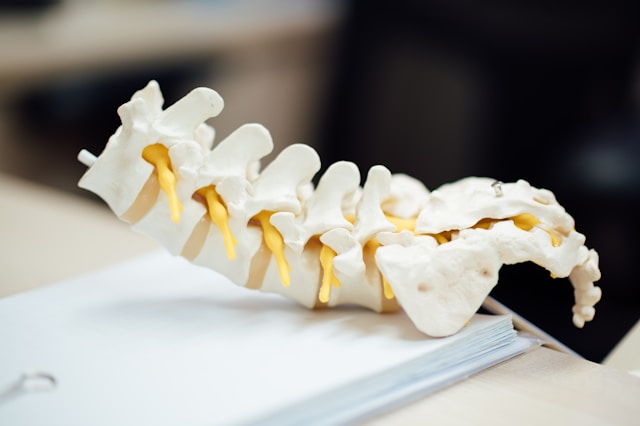Improving Spinal Alignment with Pilates for Scoliosis
Scoliosis is a condition characterised by an abnormal curvature of the spine, which can lead to significant physical discomfort and postural issues. For many, managing scoliosis effectively is crucial for improving quality of life. Pilates, a form of exercise that focuses on core strength and postural alignment, offers promising benefits for those dealing with scoliosis. By incorporating Pilates into a comprehensive management plan, individuals with scoliosis can experience improved spinal alignment and overall well-being.
Understanding Scoliosis and Its Impact
What is Scoliosis?
Scoliosis involves a sideways curvature of the spine, which can develop during the growth spurt just before puberty. There are different types of scoliosis, including idiopathic scoliosis (of unknown cause), congenital scoliosis (present at birth), and neuromuscular scoliosis (resulting from conditions like cerebral palsy). This condition can cause the spine to curve in an ‘S’ or ‘C’ shape, leading to uneven shoulders, a tilted pelvis, and other postural imbalances.
Challenges Associated with Scoliosis
Scoliosis can impact daily life in various ways. Physical challenges include back pain, limited mobility, and difficulty in maintaining a balanced posture. Emotionally, the visible effects of scoliosis and the limitations it imposes can lead to self-consciousness and stress. Traditional treatments such as bracing and surgery can be effective, but they may not address all aspects of scoliosis management.
The Benefits of Pilates for Scoliosis
Improving Postural Alignment
One of the main benefits of Pilates for scoliosis is its ability to enhance postural alignment. Pilates exercises emphasise the importance of maintaining a neutral spine and improving body awareness. Specific movements, such as the Pelvic Curl and the Spine Stretch, help correct spinal misalignments and promote a more balanced posture.
Strengthening Core Muscles
Core stability is crucial for managing scoliosis effectively. A strong core supports the spine and helps maintain proper alignment. Pilates exercises like the Plank and the Hundred are designed to build core strength, which can alleviate some of the discomfort associated with scoliosis and improve overall spinal stability.
Increasing Flexibility and Mobility
Pilates is well-regarded for its ability to improve flexibility and mobility. For individuals with scoliosis, increased spinal flexibility can reduce stiffness and enhance range of motion. Exercises such as the Saw and the Cat-Cow Stretch focus on gently stretching the spine and improving its flexibility, which is essential for managing scoliosis effectively.
Incorporating Pilates into Scoliosis Management
Starting a Pilates Routine
For those new to Pilates, starting a routine tailored to scoliosis is essential. It’s beneficial to begin with exercises that focus on spinal alignment and core stability. Working with a qualified instructor can ensure that exercises are performed correctly and are adapted to individual needs.
Working with a Specialist
Collaborating with a physiotherapist or Pilates instructor who specialises in scoliosis can provide significant advantages. These professionals can design a customised Pilates programme that addresses specific spinal issues and supports overall health. They can also guide individuals on how to integrate Pilates into their daily routine effectively.
Key Pilates Exercises for Scoliosis
Spinal Articulation
Exercises that focus on spinal articulation are crucial for those with scoliosis. The Cat-Cow Stretch, for instance, helps mobilise the spine and encourages proper alignment. This exercise involves alternating between arcing and rounding the back, which promotes flexibility and corrects imbalances.
Core Strengthening
Core-strengthening exercises are fundamental in Pilates for scoliosis management. The Plank exercise, for example, targets the deep core muscles and improves spinal stability. Strengthening these muscles can help support the spine and reduce the strain caused by scoliosis.
Postural Awareness
Enhancing postural awareness is another key component of Pilates for scoliosis. Exercises such as the Wall Roll Down help individuals become more aware of their posture and learn to maintain a neutral spine. By practising these exercises regularly, individuals can develop better posture and prevent further complications.
Takeaway
Pilates offers a valuable approach to managing scoliosis, focusing on improving spinal alignment, enhancing core strength, and increasing flexibility. By integrating Pilates into a comprehensive scoliosis management plan, individuals can achieve significant benefits, including reduced discomfort and improved postural balance. For those dealing with scoliosis, exploring Pilates as a therapeutic option can be a step towards a healthier, more active lifestyle. Embrace the potential of Pilates to support your journey towards better spinal health and well-being.
Share this content:














Post Comment